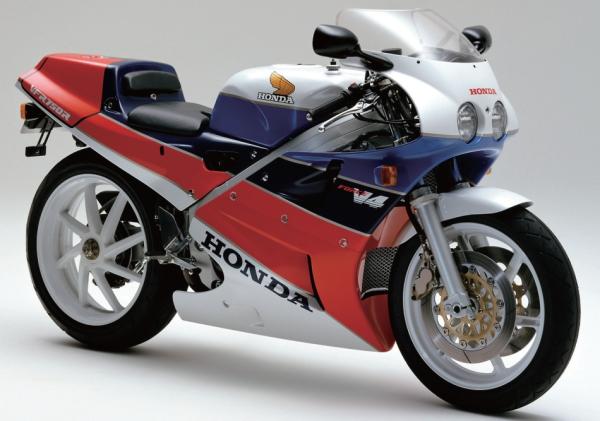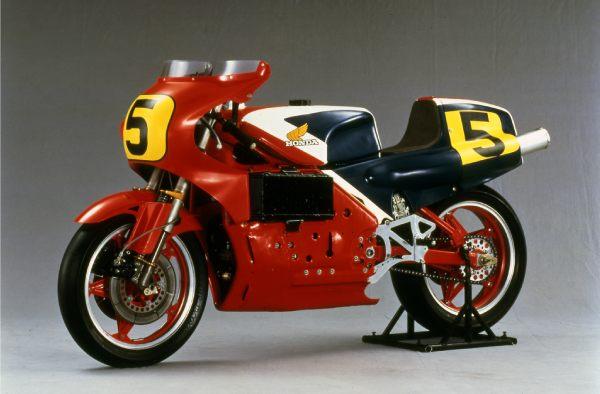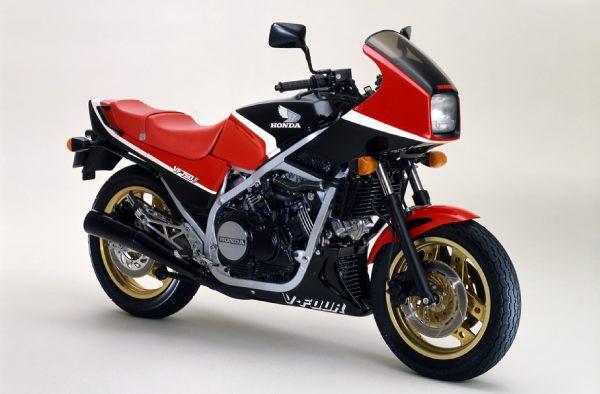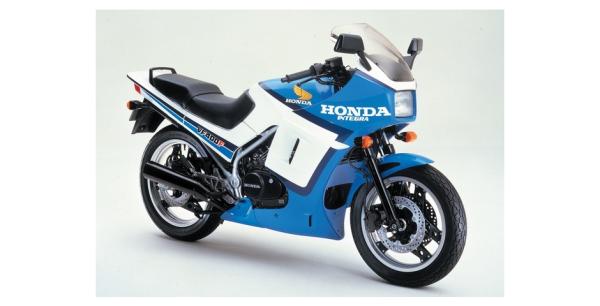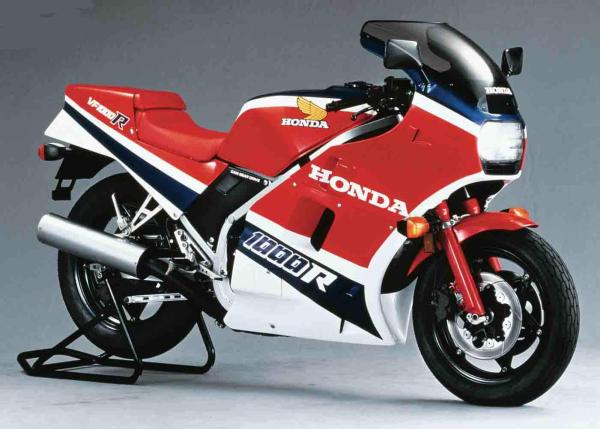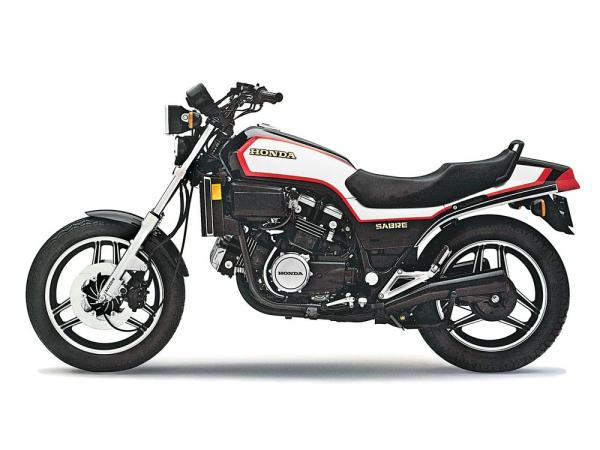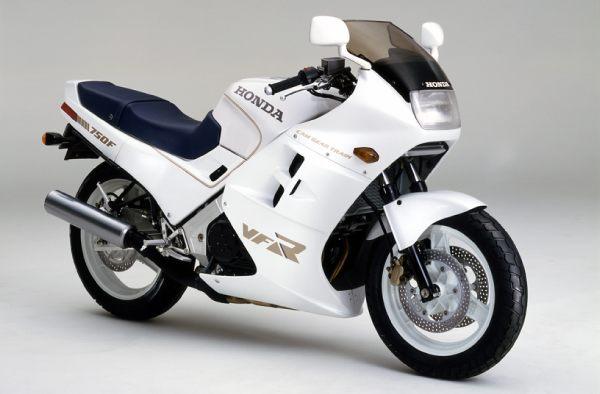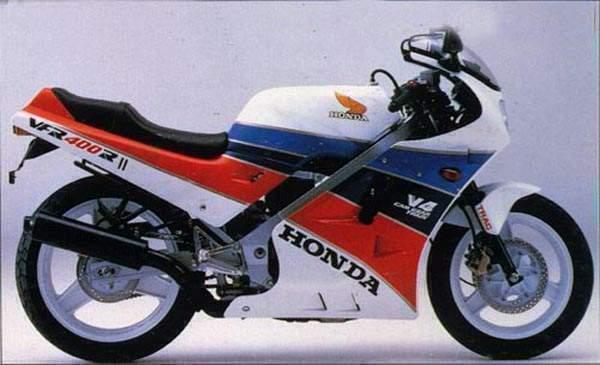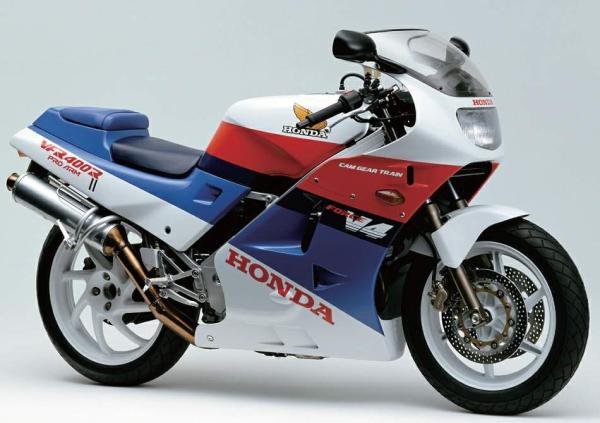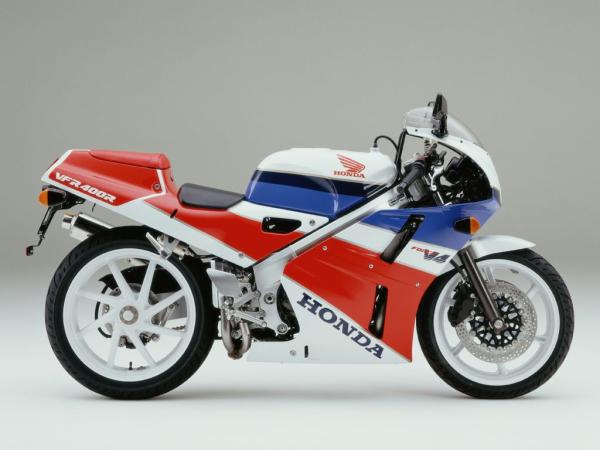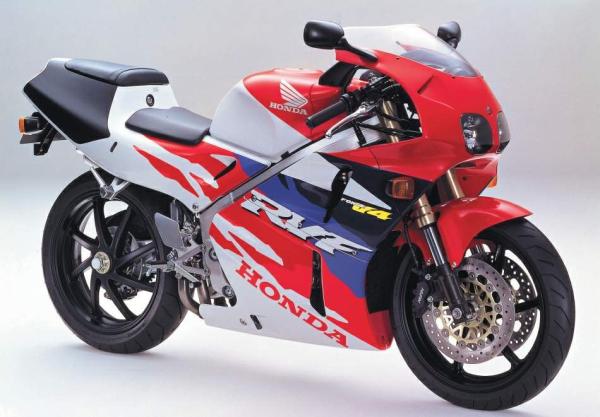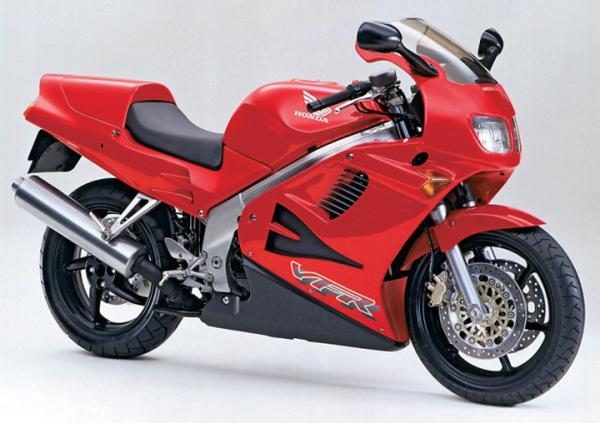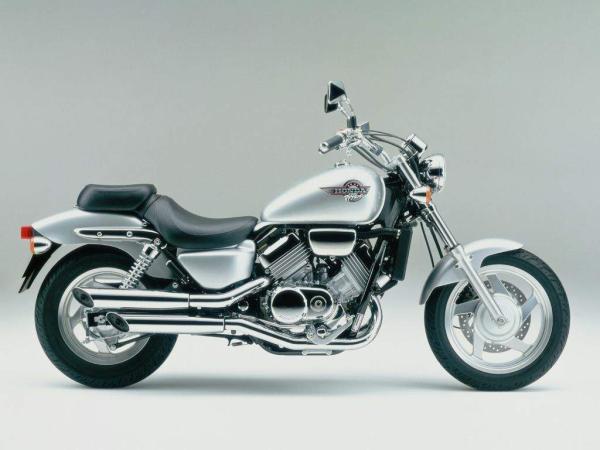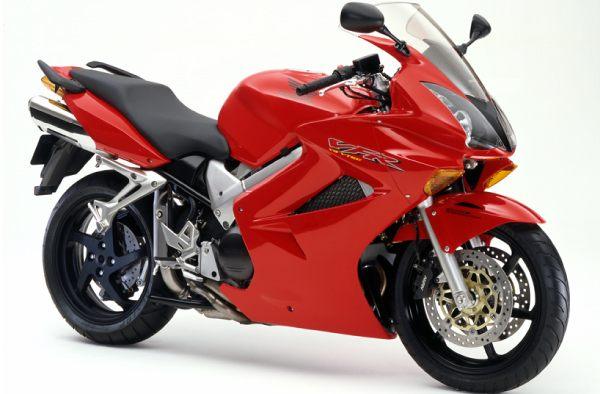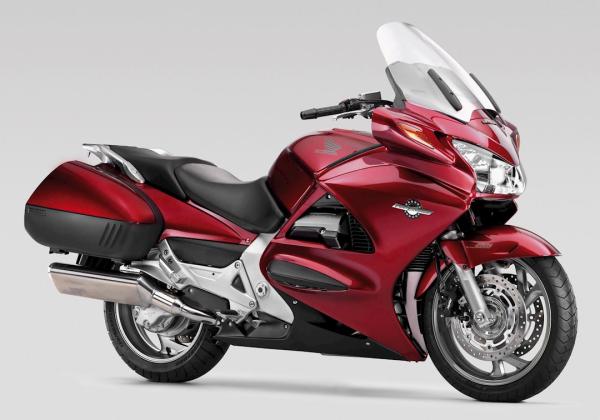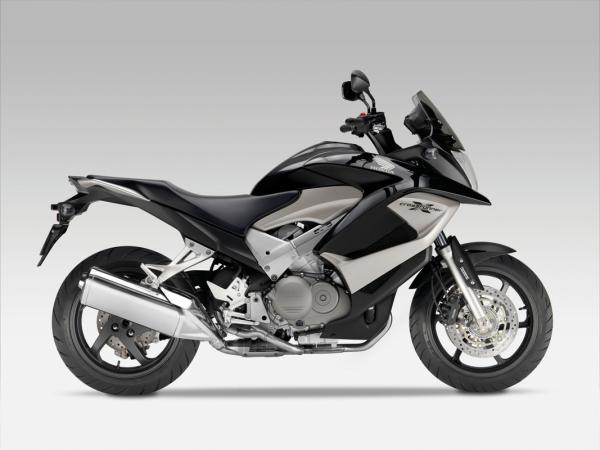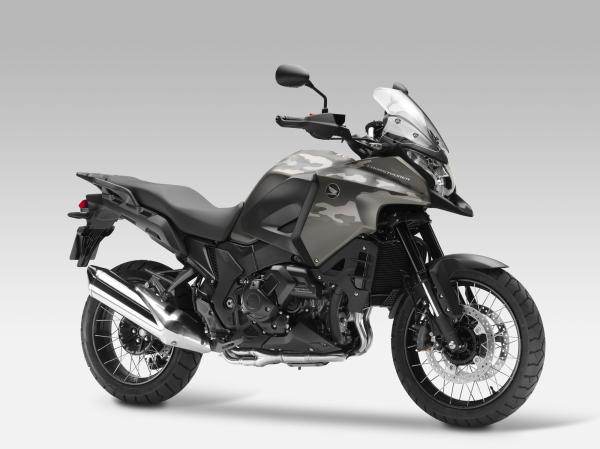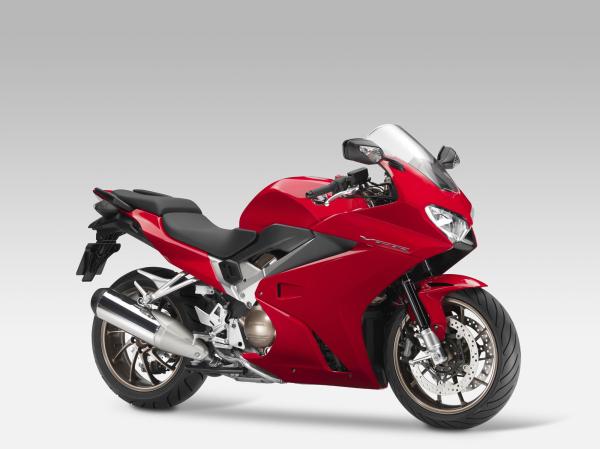V4 victory: Honda’s legendary engine
It's the most iconic motor of all and Honda own the mo'fo
THE V4 engine is having a renaissance at the moment. Whether you look at the MotoGP field or the top-line superbike offerings from Aprilia or Ducati, you’ll find that V4s are the hot ticket right now.
But one firm remains so closely tied to the format that all these others seem little more than pretenders to the crown. Of course, that firm is Honda.
That Honda has managed to own the V4 so comprehensively is a spectacular feat of marketing as much as anything else. It was by no means the first to try the format in a bike; Matchless was at it back in the 30s, long before Honda even existed, and even Ducati – seemingly a latecomer to the format with the new Panigale V4 – made its first V4 in 1964, 15 years before Honda tried the layout.
But despite those earlier efforts, the mass-market V4 really came into its own in the 1980s, when Japan’s bike firms battled for supremacy across a range of technologies. The same development spurt that saw the introduction of turbocharged bikes from each of the Big Four and which simultaneously sparked the battle of race-rep two-strokes in the middle of the decade also led to a host of V4-powered machines from Honda, Suzuki and Yamaha.
And yet it was Honda that emerged as the master of V4 engines, even though it had a less than smooth start to the process.
In the beginning…
Honda might not have made a production V4 until the 1980s, but it was 1979 that saw a V4 Honda first hit the headlines. It wasn’t just any V4, either, but the oval-pistoned, 32-valve NR500 grand prix bike. A valiant – if unsuccessful – attempt to make a four-stroke that could achieve two-stroke levels of power by revving twice as high, the NR500 was a technological wonder.
But in reality it was more like a V8 than a V4. Two con-rods and eight valves were used in each oddly-shaped cylinder. It was a spectacularly complicated and expensive way to try to match the simple, lightweight two-strokes that Honda’s rivals were all using. Honda struggled on with the NR500 until 1982, and a decade later revived the ideas for the uber-exotic 750cc NR road bike, but it’s a sidetrack to the real V4 story.
In terms of production bikes, that began in 1982, just as the NR project was being shelved, and nearly ended in disaster.
1982: The VF750F Interceptor, VF750S Sabre and VF750C Magna
It was in 1982 that Honda’s V4 onslaught for the road really began, with the sporty VF750F and naked VF750 Sabre, while the US-aimed VF750C Magna offered a cruiser-style approach to the V4 idea. All share the same 90-degree, 748cc V4 with a 70mm bore and 48.6mm stroke making around 85hp. All was good until around 1984, when the issues of camshaft wear started to emerge. The now-famous ‘chocolate camshaft’ issue was eventually solved, but the damage to Honda’s reliability image was immense.
1982: VF400F (NC13)
While the 750cc V4s made headlines in Europe and America, in Japan Honda’s VF400F was just as big a deal. Sharing similar features to its bigger siblings, the VF400F achieved an impressive 55hp from a 55mm bore, 42mm stroke V4.
1983: VF1100C Magna
Back in 1983, the VF1100C Magna was a headline-making machine. The V4 was still a sexy, new engine format and the Magna was the biggest yet. At the time, 116hp seemed a lot, making the Magna the pick of the Top Trumps cards at least until the Suzuki GV1200 Madura and Yamaha V-Max (both V4s as well, but 1200cc) emerged a year or so later. But by the Honda had bigger fish to fry…
1984: VF1000R, VF1000F
The VF1100C Magna might have proved that the V4 was good for straight-line power, but Honda had been racing its RS1000 V4s in endurance events since 1981, so a proper big-capacity road-going superbike was well overdue. Enter the VF1000R. Fully faired, and with a 130hp 998cc version of Honda’s V4 under that skin, it was Honda’s first stab at an exotic V4 sports bike. Meanwhile, the same engine, in slightly softer 122hp trim, was bolted to the half-faired VF1000F Interceptor, offering a similar experience at a much lower price.
1984: VF500F, VF500C Magna
Given that Honda had only entered the V4 production bike arena in 1982, the spread of models two years later was enormous. As well as the 750s, the Japanese-market 400, the Magna 1100 and the VF1000 machines, there were also two 500cc V4s. Following the same pattern as the other ranges, the VF500F was a part-faired sportster, while the Magna was (hideously ugly) cruiser. In 500cc form (60.4mm x 44mm bore and stroke) the V4 was good for around 70hp.
1984: VF700F Interceptor, VF700S Sabre, VF700C Magna
Just two years on from the introduction of the VF750 models, the US versions of all three bikes were dropped from 748cc to 699cc by reducing the stroke from 48.6mm to 45.4mm. Sold alongside the 750cc versions, the smaller machines dodged under the American import tariffs on bikes over 700cc, allowing Honda to slash their prices. Power dropped to about 80hp, but otherwise the bikes were largely similar to their bigger-engined predecessors.
1986: VFR750F
What a difference one letter can make. While the VFR750F was a replacement for the VF750F (and also bore the Interceptor name in America), it was a completely new bike from the ground up. The bore and stroke may have remained the same, but the engine got a 180-degree crank, new cylinder head design, new gear-driven camshafts (not chocolate this time), new pistons and rods and much more power – around 106hp. It was bolted to a new-fangled aluminium frame and started a line of machines that lives on to this day.
1986: VFR400R NC21
If adding one ‘R’ transformed the 750cc V4, what would happen when two Rs were attached to the replacement for the old VF400F? The new bike – the VFR400R (NC21) – was even sportier than the new VFR750F and achieved nearly 60hp from its 399cc V4. But it would last only a year before an even better version would appear.
1987: VFR750R RC30
Say ‘Honda V4’ and if one bike springs to mind, it’s probably the RC30. An out-and-out homologation special, developed from the 85 RVF750 endurance racer, the VFR750R stood head and shoulders above its rivals. Not only thanks to its gear-driven-cam V4 and aluminium beam frame, but also due to that single-sided swingarm and remarkable race results that would persist for years to come. No wonder they’re so expensive these days.
1987: VFR400R NC24
Generally similar to the NC21 version launched a year earlier, the NC24 iteration of the VFR400R gained a single-sided swingarm, bringing a taste of the RC30 to the masses, at least in Japan. It would later become a grey import favourite over here, too. A naked VFR400Z version was also sold in Japan.
1989: VFR400R NC30
While the NC24 took a step towards the RC30 with its single-sided swingarm, the 1989 NC30 version of the VFR400R became a complete RC30 replica – almost indistinguishable from the larger bike from some angles. Spec-wise, it got a similar beam frame to the RC30, plus a centre-lock rear wheel rather than a four-stud attachment, again copying the superbike. In Japan there was again a naked VFR400Z version.
1990: VFR750F
A new frame, new styling and – it was becoming a theme – a single-sided swingarm marked out the revamped 1990 version of the VFR750F, helping it become an even more polished performer than its predecessor. It’s the sort of bike that barely exists these days – except perhaps in its direct descendant; a comfy sports-tourer that’s heavy enough on the ‘sports’ element to be able to hold its own even against more dedicated race-reps.
1990: ST1100 Pan European
Another Honda V4, but one completely unrelated to any of the others. The ST1100 rotated its V4 by 90 degrees, putting the crankshaft in line with the frame, and added a shaft-drive, instantly becoming the world’s best touring bike. Police forces worldwide leapt on them, as did hordes of long-distance riders. It would be 12 years before it needed a revamp…
1992: NR750
What more needs to be said about Honda’s ultra-exclusive 1992 NR, the oval-pistoned, 32-valve road bike that was the belated result of the late 70s NR race program that spawned Honda’s whole V4 engine line. It was a technological jewel, even if a somewhat pointless one.
1994: RVF750R RC45
It’s easy to think of the RC45 as simply a tucked-n-tweaked RC30, but while there are definite similarities that’s doing the later bike a huge disservice. The reality is that it’s a comprehensive evolution with new chassis geometry, a new engine with a shorter stroke, bigger bore, new heads and fuel injection, not to mention a completely redesigned cam drive gear system. Plus, of course, the new suspension and improved aerodynamics.
1994: RVF400R NC35
Just as the RVF750R was a massive revamp of the VFR750R, so the RVF400R is a redone VFR400R (NC30), again with big changes – albeit not quite as comprehensive ones as on the larger model. New suspension, new bodywork, a tweaked engine and a shift to a 17in rear wheel (the earlier bike had an 18in rim) were the highlights.
1994: VFR750F
Another big update to the VFR750 as it entered its last era as a 750cc machine, the 1994 changes included NR-inspired bodywork among other tweaks to help reduce weight and keep the VFR competitive for a few more years until the larger 800cc version could be introduced.
1994: VF750C Magna
The original Magna in both 700cc and 750cc forms was dropped in 1988, but it returned as a completely new bike in 1994. The engine was derived from the VFR750’s this time – sharing nothing with its predecessor’s motor. Detuned to around 78hp and driving through a five-speed box, it was a decent enough effort but never had the cachet of a ‘proper’ V-twin cruiser.
1998: VFR800F
Adopting a revamped 782cc engine, derived (at a distance) from that used in the RC45, the first VFR800F is officially the ‘RC46’. As well as the extra cubes, the engine gained fuel injection and was a structural part of the bike – allowing Honda to use a half-length frame with the swingarm pivot directly in the engine. There was a hint of Fireblade in the latest look.
2002: VFR800 VTEC
The next big change to the VFR came in 2002 – it shared the VFR800 name but little else. While the bodywork was more aggressive than before, with quad under-seat exhaust exits from two silencers, showing off the single-sided swingarm better than its predecessors. The engine’s highlight tech was its VTEC system, which disabled one inlet and one exhaust valve in each cylinder at low revs, switching to all four valves as revs rise. However, fans of the earlier VFR would criticise the system, not to mention the engine’s switch to chain-driven camshafts from the earlier bikes’ race-style gear-drive arrangement. Expensive servicing and a noticeable VTEC switchover were the most common complaints.
2002: ST1300 Pan European
With the ST1100 looking long in the tooth, the ST1300 was introduced with a new engine, new aluminium frame and even greater touring abilities. It was to enjoy a similarly long life, too, as well as the same popularity with police, although the Pan European has finally been dropped from the range now.
2010: VFR1200F
After the huge investment in the 2002 VFR, Honda seemed to take a break from V4s for a while, so there was huge anticipation when it revealed its V4 Concept in 2008. Was it going to unleash a full-on V4 superbike at last? Err… No. Instead we got the VFR1200F in 2010. A technological masterpiece, incorporating clever single-cam, four-valve heads and the first iteration of Honda’s seamless-shift, dual-clutch transmission as an option, it had a fascinating spec sheet but turned out to be less exciting to ride than many had hoped. Neither a replacement for the Super Blackbird, nor a superbike or a full-on tourer in the Pan European mould, it didn’t live up to the high expectations that the promise of a new V4 had raised.
2011: VFR800X Crossrunner
With adventure style bikes all the rage, the decision to give the ageing VFR800F a makeover and turn it into the Crossrunner seemed to make sense. And given the strength of the VFR as a platform – even nearly a decade after its launch – the Crossrunner was a decent idea. And a well-executed one, too; as a day-to-day road bike it’s hard to fault. Even so, it lacked the out-and-out ‘adventure’ element of the more successful machines in the class.
2012: VCF1200X Crosstourer
Take the same recipe used to turn the VFR800 into the Crossrunner but apply it to the VFR1200F and the result is the Crosstourer. It’s arguably the better bike, too, which explains why it’s still in Honda’s range today while the VFR1200F was quietly dropped a little while ago. But most potential buyers still end up at the BMW dealership signing papers for an R1200GS.
2014: VFR800F
The latest revamp of the VFR750 brings the cosmetics, suspension, technology and brakes up to date but underneath the bones are still those that were introduced in 2002. They’ve lasted well, though, and the latest tweaks mean that while the VFR isn’t the high-tech showstopper that the original 750 was back in 1986, it’s still a fabulous all-rounder. A facelifted VFR800X Crossrunner came a year later, reflecting the updates to the VFR800F in the adventure-styled machine.
2015: RC213V-S
At last, a proper superbike from Honda based around a competition bred V4 engine. The first since the RC45 some 21 years earlier. It’s just such a shame that the bike’s insane price tag (£138,000 – and you’ll be wanting to buy the £10k sports kit too, to unleash all its performance). It’s a thing of pure joy and beauty, but the vast majority will spend their lives tucked in heated garages rather than actually being used.
The future…
There’s talk that Honda is developing another V4 superbike in the mould of the RC30 and perhaps intended for WorldSBK competition. But the same rumours tend to crop up year after year, so until such a thing actually shows its face, don’t hold your breath.
